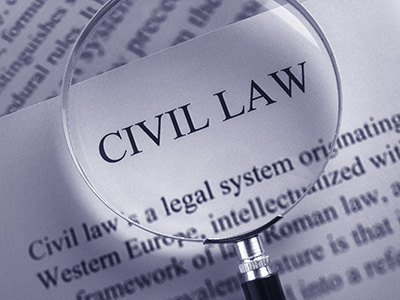Reflective Thinking Task
– Blog #5
I
disagree with the statement that if an expert report if structured well, there
is really no other preparation needed as an expert witness for court. I recently participated in a mock trial, State Vs P.Simpson, at the Queensland
University of Technology as part of the AYB115
Governance, Fraud and Investigation unit. I was a ‘mock’ expert forensic accounting
witness, hired by the defence for Mr Peter Simpson.
In my own personal experience presenting evidence in
the mock trial, I found it to be a daunting process. Despite having read through both expert
reports extensively, and having practised answers for potential questions, I
was unprepared. The moment I took the
stand I could not think as clearly and answered questions too quickly without thinking
about the appropriate answers. I saw
this scenario occur repeatedly throughout the trial. Other students also rushed their answers, and
sometimes even had reverse their response from something as simple as ‘no’ to
‘yes’. In these situations, the cross
examiner was able to make the expert witness sound incompetent, therefore destroying
their credibility as an expert.
The acting judge, Paul Vincent, and the practicing
barristers for this mock trial, Andrew O’Brien and Michael De Waard, provided
the group with some recommendations for accounting expert witnesses (also
backed up by Dr. Larry Crumbley).
Crumbley also states that the lack of the below points are some of the
major problems associated with expert witnesses;
- Preparation is key. This is not only in relation to the
expert report, but also preparing with your barrister on the questions
that you may be asked and the appropriate responses. The most important
aspect to preparation is having the appropriate evidence (especially
source documents).
- Ensure you understand the questions before you
deliver your answer, and never be afraid to ask to hear the question again
(doing this is 100% better than answering with incorrect information).
- Understand that the cross examining barrister will
have already examined your expert report thoroughly. Therefore, before the trial, with your
own barrister (examiner in chief), ensure you have practised a cross
examination scenario (in an attempt to see where holes are missing, or
where you as an expert have a lack of knowledge in your own expert
opinions).
- Ensure you can communicate your evidence in a
language the judge and jury will understand.
- And lastly, the two most important things are
to remain honest and never alter your integrity (regardless of how it will
affect your case), (Crumbley, L. 2008).
According to Mr Preber in his book, Financial Expert Witness Communication: A
Practical Guide to Reporting and Testimony, preparing for the accounting
expert witness deposition is vital to ensure the testimony is relevant, clear
and understandable, (2014, p.189). Preber claims that every “expert witness, regardless of experience
level, has a professional responsibility to prepare thoroughly for deposition”,
(2014).
References
Crumbley, L. (2008). The Battle of Accounting Expert
Witnesses: Judges Can Be Harsh. Forensic
Examiner. 17(2), 48-53. Retrieved from http://search.proquest.com.ezp01.library.qut.edu.au/docview/207654707/abstract/94FDF2B30B3F4267PQ/1?accountid=13380
Preber,
B.J. (2014). Financial Expert Witness
Communication: A Practical Guide to Reporting and Testimony. Doi: 10.1002/9781118911778.


